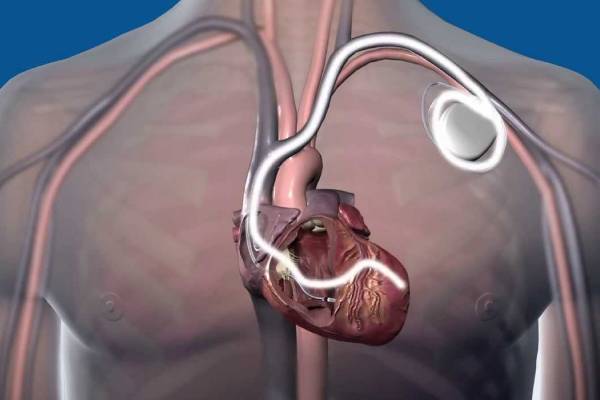
An implantable converter-defibrillator is a device that is implanted in the chest to detect possible cardiac disorders and prevent the irregular electrical activity of the heart. The defibrillator monitors the electrical conduction system of the heart and sends electric impulses to normalize the rhythm of the heart whenever needed. The implantable defibrillator responds to irregular heartbeats that arise from the lower chambers of the heart, that is, ventricles. Therefore, the device responds to Ventricular Arrhythmia, which comprises rapid and irregular heartbeats in the lower chambers of the heart. It includes premature ventricular contraction where premature heartbeats arise from the ventricles, Ventricular tachycardia where fast heart rhythms arise from the ventricles, accelerated idioventricular rhythm where the heart beats at the rate between 40 to 120 beats per minute and affects the cardiac muscle alone, Arrhythmogenic Cardiomyopathy, that primarily affects the tissues of the right ventricle, with associated irregular heartbeats. It first attacks the right ventricle, which puts a lot of stress on the left ventricle, and then, if not treated, stiffens and weakens both the ventricles. It also includes ventricular fibrillation which refers to disorganized electrical activity in the ventricles and torsades de pointes, which is a specific type of abnormal heart rhythm that leads to sudden cardiac death.
Types Of Implantable Defibrillator
There are two types of the cardiac therapy device:-
Who Needs An Implantable Defibrillator
What To Expect Before The Procedure
What To Expect After The Procedure
Risks Associated With Implantable Defibrillator
The faculty of Dr. Swapnil Mate's Cardiology clinic includes experienced cardiologists, cardiac surgeons, cardiac imaging specialists, a preventive cardiology team, experienced pediatric cardiac surgeons and assisting surgeons, physical therapists, nutritionists, geneticists, child-life specialists, a multidisciplinary interventional cardiology team, and a group of pathologists who run by tests and give the proper cause of diseases. The cardiologists and surgeons recommend the ideal surgery to the patients. They mention the advantages and risks associated with the surgeries they plan to do on them. Together, they provide services that cater to their needs. Consult Dr. Swapnil Mate for the best medical assistance.
